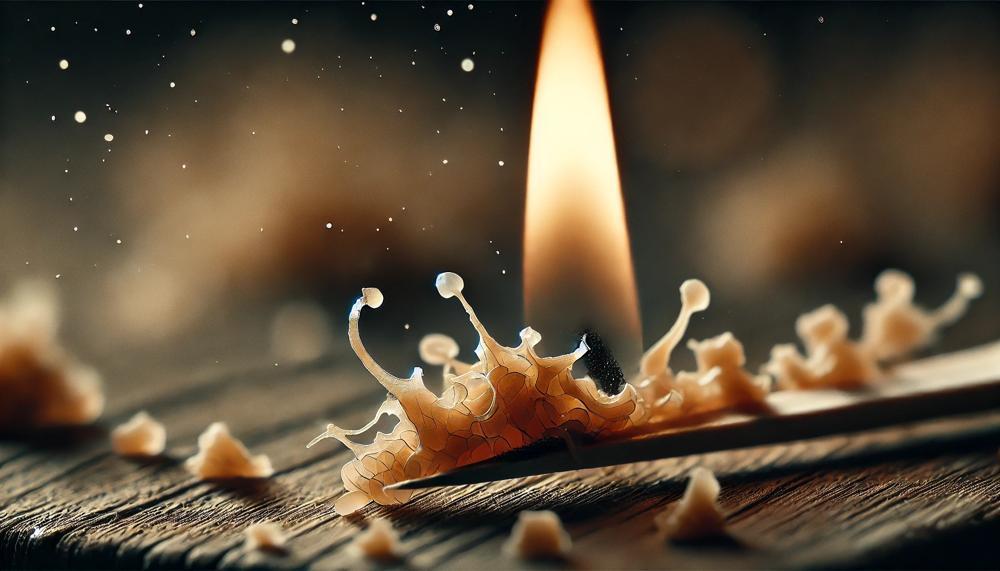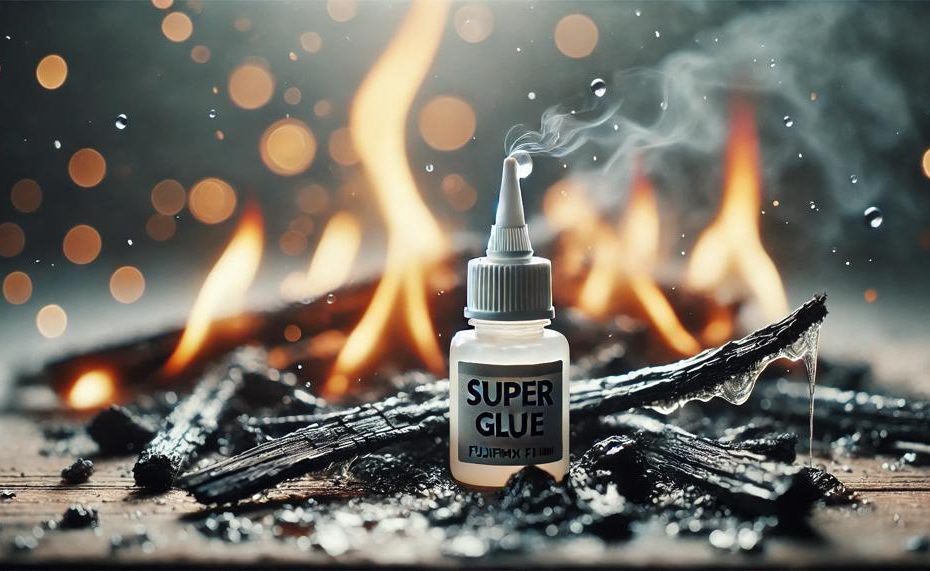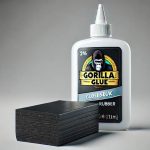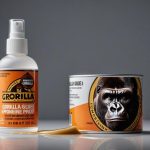Yes, dried super glue can catch fire, although it is less flammable than in its liquid state. Super glue, or cyanoacrylate adhesive, is known for its quick-bonding properties and versatile applications. However, its chemical makeup includes ethyl cyanoacrylate, which is highly flammable in liquid form.
While drying and curing reduce its flammability, dried super glue can still ignite under extreme heat or direct flames. This characteristic underscores the importance of proper handling and storage to mitigate fire risks.
Key Takeaways:
- Flammability: Liquid super glue is highly flammable; dried glue is less so but still can catch fire.
- Heat Sensitivity: Both liquid and dried super glue are susceptible to ignition from extreme heat or direct flames.
- Safety: Proper handling, storage, and following manufacturer guidelines are crucial for safety.
- Alternatives: Consider non-flammable adhesives for projects where flammability is a concern.
Understanding the flammability of super glue in both its states can help you use this powerful adhesive safely and effectively. Read on to explore more about how to handle, store, and choose the right adhesive for your needs.
Table of Contents
What is Super Glue?
Super Glue, known scientifically as cyanoacrylate adhesive, is a fast-acting adhesive that forms strong bonds with various materials.
Its unique bonding ability stems from a process called anionic polymerization, which is triggered by water molecules present on the surfaces being bonded.
| Type of Glue | Chemical Composition | Bonding Characteristics |
| Super Glue (Cyanoacrylate) | Ethyl cyanoacrylate | Quick bonding (10-45 seconds), strong, suitable for various surfaces |
| White Glue (PVA) | Polyvinyl acetate | Slower bonding, flexible, best for porous materials like wood and paper |
| Contact Cement | Neoprene or nitrile rubber in solvent | Strong, durable, best for large surface areas, suitable for outdoors |
Key Differences
- Bonding Time: Super Glue bonds almost instantly, typically within 10 to 45 seconds, and fully cures in several hours. White glue takes longer to set and requires clamping for the best results.
- Surfaces: Super Glue adheres to a wide range of surfaces, including metal, plastic, ceramic, and more, due to its reaction with water molecules. White glue is most effective on porous surfaces such as wood, paper, and fabric.
- Formulas: Super Glue is available in various formulations, including liquid and gel. The gel version is ideal for vertical surfaces and porous materials, while the liquid is best for smooth surfaces. White glue generally comes in a single liquid form, designed for everyday crafts and woodworking.
- Strength and Durability: Super Glue forms a rigid, durable bond ideal for small, precise repairs. Contact cement, however, creates a robust bond suitable for larger areas and exterior applications. It differs significantly in application, requiring a thin layer on both surfaces and some time to become tacky before pressing together.
Chemical Composition of Super Glue
The main chemical components of super glue are cyanoacrylate and polyvinyl acetate (PVA). These components not only make super glue a powerful adhesive but also contribute to its flammability. Here’s a detailed look at each component and their roles:
| Component | Function | Contribution to Flammability |
| Cyanoacrylate | Fast-acting adhesive that polymerizes upon contact with water molecules, forming a strong bond. | Highly flammable due to its volatile nature and rapid polymerization, which generates heat. |
| Polyvinyl Acetate (PVA) | Acts as a stabilizer, enhancing the setting speed and strength of the adhesive. | Contributes to flammability as it is a combustible polymer, though less volatile than cyanoacrylate. |
Cyanoacrylate is the primary component responsible for the adhesive properties of super glue. This monomer rapidly polymerizes in the presence of moisture, creating a strong, rigid polymer chain that binds surfaces together. However, cyanoacrylate is also highly flammable. Its polymerization reaction is exothermic, meaning it releases heat, which can ignite the adhesive under certain conditions. This property is crucial in understanding the safety concerns associated with super glue.
Polyvinyl Acetate (PVA), while primarily a stabilizer, also has an impact on the adhesive’s flammability. PVA helps in controlling the setting process of the glue, ensuring it bonds quickly and effectively. Despite being less volatile than cyanoacrylate, PVA is a combustible substance that can burn if exposed to sufficient heat or flame.
Together, these components create a potent adhesive with notable flammable characteristics. The combination of cyanoacrylate’s rapid heat-producing reaction and PVA’s combustible nature explains why super glue must be handled with care, particularly around open flames or high temperatures.
What Makes Super Glue Non-Flammable?
Super glue’s non-flammable nature stems from several key chemical properties:

- Low Volatility: Super glue, or cyanoacrylate adhesive, has a low volatility, meaning it does not easily evaporate or release vapours that can ignite. The strong bonds between its molecules prevent the formation of gas, making it safer compared to more volatile adhesives.
- High Flash Point: The flash point of super glue is around 80°C (176°F). This is the minimum temperature at which it can release enough vapours to ignite. Since this temperature is relatively high, it makes the glue less likely to catch fire under normal conditions.
- Absence of Solvents: Unlike many adhesives, super glue does not contain solvents. Solvents are often flammable and increase the risk of fire. Their absence in super glue reduces its flammability significantly.
- Low Heat of Combustion: Super glue releases a minimal amount of heat when it burns. This means that even if it does catch fire, it does not produce enough heat to sustain combustion or cause a fire to spread.
Potential Risks of Igniting Super Glue
Super glue, or cyanoacrylate adhesive, presents several risks if ignited, primarily due to its chemical properties and the heat it generates during curing. Below is an analysis of these risks and the measures to avoid them.
Risks of Igniting Super Glue
| Risk | Description | Consequences |
| Heat Generation | Super glue can generate significant heat during the curing process, especially when used in large amounts or on porous materials. | This heat can potentially lead to ignition, especially if the glue is applied near flammable materials. |
| Flammable Fumes | When super glue is used, it can release fumes that are potentially flammable. | These fumes can ignite if exposed to open flames or hot surfaces. |
| Improper Storage | Storing super glue in high-temperature environments can increase the risk of ignition. | Accidental fires could occur if the glue is exposed to temperatures above its safety threshold. |
How to Avoid Risks
- Avoid Heat Sources: Keep super glue away from open flames, hot surfaces, and electrical equipment. This includes avoiding smoking or using super glue near stoves and heaters.
- Proper Storage: Store super glue in a cool, dry place, away from direct sunlight and heat. Ideal storage conditions are below 25°C (77°F) to prevent any risk of heat-induced ignition.
- Ventilation: Use super glue in well-ventilated areas to disperse any potentially flammable fumes and reduce the risk of inhalation of harmful vapours.
- Protective Gear: Wear gloves and safety goggles when handling super glue to protect your skin and eyes from accidental contact, which can cause burns or irritation.
- Controlled Application: Apply super glue in small amounts to reduce the heat generated during curing. Avoid using it on porous materials in bulk, as this can increase the risk of excessive heat build-up.
- Emergency Preparedness: Keep a fire extinguisher or a bucket of sand nearby when working with large quantities of super glue. Knowing how to respond quickly to a fire can mitigate potential damage.
How to Handle Dried Super Glue Safely
Handling dried super glue safely requires taking specific precautions to mitigate risks associated with its use.
Understanding Risks
Dried super glue is less hazardous than liquid form but can still pose risks, such as skin irritation or accidental bonding.
Personal Protective Equipment (PPE)
- Wear Gloves: Use nitrile or latex gloves to avoid direct skin contact.
- Eye Protection: Wear safety glasses to protect eyes from potential contact or fumes.
Work Area Preparation
- Ventilation: Ensure the area is well-ventilated to disperse any residual fumes.
- Clean Surfaces: Clean work surfaces to prevent accidental bonding of tools or other items.
Handling Dried Super Glue
- Avoid Scraping: Do not scrape dried glue off surfaces to avoid inhaling dust.
- Use Gentle Removal Techniques: For skin, soak in warm soapy water to soften the glue before gently peeling it off.
Tool and Surface Maintenance
- Clean Tools Promptly: Clean tools immediately after use to prevent glue buildup.
- Protective Barriers: Use non-stick surfaces or barriers where glue is applied to prevent bonding to unintended areas.
Storage and Disposal
- Proper Storage: Store super glue in a cool, dry place away from heat sources to prolong shelf life.
- Disposal: Dispose of glue containers according to local hazardous waste guidelines.
Emergency Measures
- Seek Professional Help: If glue contacts eyes or sensitive skin areas, seek medical attention immediately.
- Fire Safety: Keep dried glue away from open flames or heat sources as it can still release flammable fumes.
Storing Tips for Super Glue
To prevent super glue from catching fire when dried, follow these storage tips:
Store in a Cool, Dry Place
- Keep super glue in a well-ventilated area, away from direct sunlight and heat sources. Ideal storage temperatures range between 55°F to 75°F (13°C to 24°C).
- Avoid areas prone to temperature fluctuations, such as garages or attics.
Use Airtight Containers
- Store super glue in its original container or in an airtight container to prevent exposure to air and moisture, which can degrade the adhesive and increase the risk of ignition.
- Ensure the cap is tightly sealed after each use to maintain the glue’s integrity.
Keep Away from Ignition Sources
- Store super glue away from flames, sparks, and electrical appliances that could act as ignition sources.
- Avoid storing super glue near combustible materials like paper, cloth, or other flammable chemicals.
Follow Manufacturer’s Instructions
- Adhere to the storage guidelines provided by the manufacturer on the product label.
- Pay attention to any specific warnings or instructions regarding flammability and safe storage practices.
Conclusion
Dried super glue, while significantly less flammable than its liquid counterpart, still harbors a risk of ignition under intense heat or direct flame. This adhesive, primarily composed of cyanoacrylate, exhibits reduced flammability once it cures, as the volatile components evaporate during the drying process. However, it is not entirely immune to fire hazards.
The nature of cyanoacrylate’s polymerization, which involves rapid heat release, can still pose a risk when exposed to high temperatures. This characteristic highlights the need for careful handling and storage to avoid accidental ignition. Opting for non-flammable adhesives is a prudent choice for projects where fire risk is a concern.
Understanding the flammable potential of both liquid and dried super glue is essential for safe usage.






